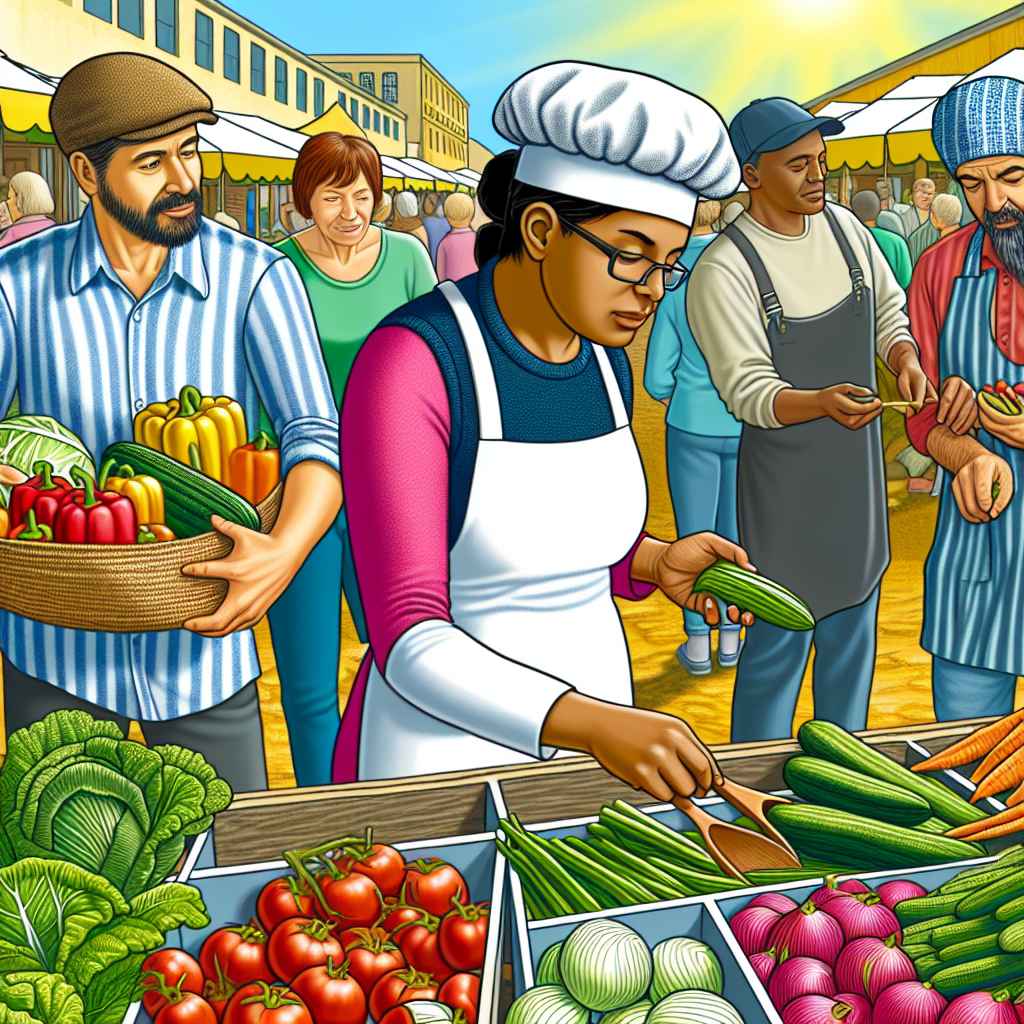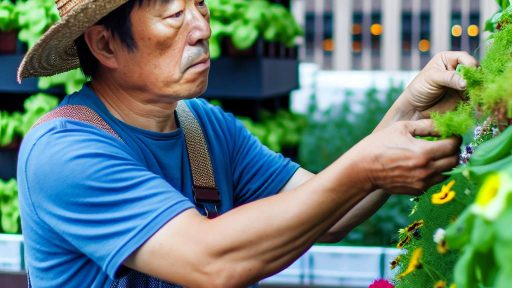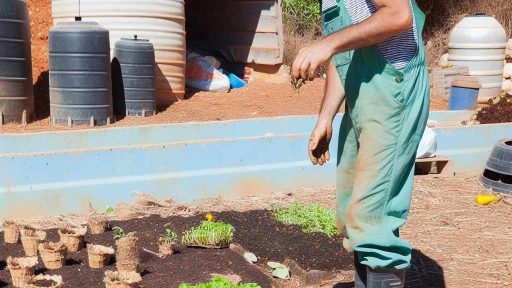Introduction to Farm-To-Table Pop-Ups
Concept of Farm-To-Table Pop-Ups
Farm-to-table pop-ups connect chefs directly with farmers.
These events showcase fresh, seasonal ingredients.
Chefs create unique dishes using locally sourced produce.
This model fosters community relationships and sustainability.
Importance of Direct Sourcing
Direct sourcing strengthens the local economy.
It reduces transportation costs and carbon footprints.
Moreover, it enhances the freshness of ingredients.
Farmers gain exposure and build a loyal customer base.
Benefits for Chefs and Diners
Chefs experiment with local flavors and ingredients.
This approach encourages creativity in menu design.
Diners enjoy a unique dining experience with each pop-up.
Additionally, they gain insight into food sourcing practices.
Community Engagement and Education
Farm-to-table pop-ups often include workshops and discussions.
These events educate the public on sustainable practices.
They highlight the significance of knowing food origins.
Transform Your Agribusiness
Unlock your farm's potential with expert advice tailored to your needs. Get actionable steps that drive real results.
Get StartedEngagement fosters a sense of community and togetherness.
Benefits of Direct Sourcing: Farmer-Chef Collaboration
Enhancing Food Quality
Direct sourcing boosts food quality significantly.
Farmers provide fresher ingredients directly to chefs.
Chefs access a variety of unique produce and meats.
This approach reduces the time from farm to table.
Fresh ingredients enhance the flavor of dishes.
Strengthening Relationships
Building relationships benefits both farmers and chefs.
Regular communication fosters trust and collaboration.
Farmers gain valuable insights into consumer trends.
Chefs understand seasonal availability better through direct contact.
This collaboration leads to a more sustainable food system.
Promoting Local Economy
Direct sourcing supports local farmers and producers.
This practice contributes to the local economy.
Chefs create a sense of community through their sourcing choices.
Local engagement attracts customers interested in sustainability.
Moreover, it reduces transportation costs and carbon emissions.
Encouraging Sustainability
Working directly with farmers can enhance sustainability efforts.
Chefs can promote organic and non-GMO produce through their menus.
Farmers implement environmentally-friendly practices upon chef recommendations.
Such partnerships drive awareness of sustainable farming.
Ultimately, they contribute to ecological preservation.
Key Ingredients for Successful Pop-Ups
Understanding Seasonal Sourcing
Seasonal sourcing plays a crucial role in farm-to-table pop-ups.
It emphasizes the use of ingredients harvested during their peak time.
This practice not only ensures optimal flavor but promotes sustainability.
Showcase Your Farming Business
Publish your professional farming services profile on our blog for a one-time fee of $200 and reach a dedicated audience of farmers and agribusiness owners.
Publish Your ProfileMoreover, it encourages local farmers to produce diverse crops.
By rotating menus, chefs can maximize seasonal offerings.
In addition, it helps to reduce carbon footprints associated with transportation.
Local Sourcing Benefits
Local sourcing fosters community relationships between chefs and farmers.
It enables chefs to have direct input on the ingredients used.
This collaboration enhances the quality of dishes prepared for pop-ups.
Furthermore, local sourcing supports the local economy significantly.
When chefs use local ingredients, it builds pride within the community.
Additionally, this strategy minimizes the risk of supply chain issues.
Building Strong Partnerships
Developing strong partnerships with farmers is essential for success.
Chefs should visit farms to foster deeper connections.
By understanding farming practices, chefs can better appreciate ingredient quality.
This relationship also provides chefs with unique insights into upcoming harvests.
Collaboration can lead to the creation of exclusive dishes.
Ultimately, this partnership ensures consistent ingredient availability.
Creating Unique Menus
Dynamic menus can attract diverse crowds to pop-up events.
Chefs should focus on highlighting seasonal ingredients in their dishes.
This approach enhances the dining experience and sparks excitement.
Creating themed pop-ups can also generate interest and engagement.
Guests appreciate the creativity that comes from using local products.
Unique menus can turn coastal or mountain inspirations into culinary masterpieces.
Engaging Customers
Engaging customers enhances the overall experience of pop-up events.
Chefs can host workshops or farm visits to connect with guests.
This strategy cultivates an appreciation for sustainable ingredients.
By sharing stories about the sourcing process, chefs create a connection.
Encouraging feedback from diners helps refine future menus, too.
Ultimately, interaction builds community trust and loyalty.
Discover More: Farm Fresh Delivery Services for Community Supported Agriculture
Building Relationships: How Farmers and Chefs Can Connect
Understanding the Importance of Connection
Farmers and chefs play critical roles in the food industry.
When they connect, everyone benefits, especially consumers.
Direct communication fosters better collaboration.
Additionally, it encourages transparency in sourcing ingredients.
Participating in Farm-to-Table Events
Farm-to-table events present excellent networking opportunities.
These gatherings allow farmers to showcase their products.
Chefs can experiment with fresh ingredients at these events.
Both parties can learn about each other’s needs and expectations.
Utilizing Social Media Platforms
Social media has transformed how farmers and chefs connect.
Platforms like Instagram highlight seasonal produce and dishes.
Farmers can share updates on crop availability easily.
Chefs can demonstrate their culinary creations using local ingredients.
Showcase Your Farming Business
Publish your professional farming services profile on our blog for a one-time fee of $200 and reach a dedicated audience of farmers and agribusiness owners.
Publish Your ProfileThus, both can engage directly with consumers as well.
Creating Collaborative Networks
Collaborative networks can enhance communication between farmers and chefs.
Culinary associations often host networking events for this purpose.
Additionally, local farmer’s markets enable direct interactions.
This fosters relationships that enhance the local food ecosystem.
Supporting Local Initiatives
Supporting local food initiatives strengthens community bonds.
Farmers’ co-ops can connect chefs with fresh ingredients.
Joining food advocacy groups allows both parties to share insights.
Such initiatives promote sustainability and local economies.
See Related Content: Farm Fresh Delivery Services for Locally Sourced Produce
Marketing Strategies for Farm-To-Table Events
Understanding the Community
First, identify the community’s interests and preferences.
Understanding local tastes fosters better connections.
Engage residents in discussions about food choices.
Conduct surveys to gather valuable feedback.
Building Partnerships
Establish strong relationships with local farmers.
Collaborate with chefs who champion sustainable practices.
Share resources to limit costs and maximize impact.
Promote each other’s events to widen audience reach.
Engaging Events
Create engaging and interactive farm-to-table events.
Host cooking demonstrations featuring local ingredients.
Include farm tours to educate attendees about sourcing.
Facilitate discussions with farmers to encourage transparency.
Utilizing Social Media
Leverage social media for event promotion.
Share enticing images of dishes created from fresh ingredients.
Create a dedicated event hashtag for easy tracking.
Encourage attendees to share their experiences online.
Creating Community Involvement
Encourage local participation through volunteer opportunities.
Invite local artists to showcase their works at events.
Offer incentives for community members to attend.
Host workshops on sustainable cooking practices.
Highlighting the Benefits
Educate attendees about the benefits of eating local.
Explain the environmental advantages of supporting local farms.
Share stories of the farmers who produce food for the community.
Feature nutrition information to promote healthy eating.
Discover More: From Crop Rotation To Artisan Bread: Connecting Sustainable Wheat Sources

Operational Considerations
Logistics of Setting Up Pop-Ups
Setting up a farm-to-table pop-up requires careful planning.
First, identify the location that best suits your event.
Accessibility plays a key role in attracting attendees.
Next, secure necessary permits for food service.
Consult local health departments for regulations.
Showcase Your Farming Business
Publish your professional farming services profile on our blog for a one-time fee of $200 and reach a dedicated audience of farmers and agribusiness owners.
Publish Your ProfileGather a list of local farmers and producers.
This ensures you have fresh, seasonal ingredients.
Establish relationships that prioritize direct sourcing.
Plan the timeline for ingredient delivery.
Consider transportation logistics for perishable items.
Coordinate with farmers to synchronize harvest schedules.
Develop a clear menu reflecting available ingredients.
This allows chefs to work with the freshest produce.
Create a realistic budget that includes all expenses.
Factor in venue rental, staffing, and marketing costs.
Next, choose a date that avoids conflicts with other events.
Promote the pop-up through social media and local networks.
Engage with food bloggers to amplify your outreach.
On the day of the event, ensure proper setup is in place.
Assign roles to staff to streamline operations.
Additionally, prepare to handle last-minute changes.
Finally, evaluate the event’s success for future improvements.
Gather feedback from participants and producers alike.
This helps refine your approach for subsequent pop-ups.
Uncover the Details: Artisanal Food Production for Home-Based Food Businesses
Case Studies: Successful Farm-To-Table Pop-Up Events
Pop-Up Success: Green Fork Collective
Green Fork Collective organized a pop-up in downtown Portland.
This event showcased local farmers and their products.
Participating chefs created a special menu featuring seasonal ingredients.
The community responded enthusiastically, filling the venue.
Guests enjoyed dishes made from fresh produce.
Feedback highlighted connections between farmers and diners.
Flavors of the Field: Culinary Expedition
Culinary Expedition hosted a farm-to-table event in Napa Valley.
It featured chefs collaborating with organic farmers.
The chefs crafted unique meals using ingredients from nearby farms.
Each dish included detailed stories about the sources.
This created an immersive experience for attendees.
As a result, many attendees supported the featured farms afterward.
Harvest Sharing: The Seasonal Feast
The Seasonal Feast event took place at Hillcrest Farm.
Chefs collaborated to showcase autumn flavors.
Guests participated in a guided farm tour before dining.
They learned about sustainable farming practices.
Innovative dishes included roasted root vegetables and herbal infusions.
Feedback highlighted a strong sense of community and belonging.
Sustaining Relationships: A Chef’s Network
A Chef’s Network organized multiple pop-up events across cities.
These events united chefs and farmers in various locations.
Showcase Your Farming Business
Publish your professional farming services profile on our blog for a one-time fee of $200 and reach a dedicated audience of farmers and agribusiness owners.
Publish Your ProfileEach event featured a local theme and seasonal produce.
Chefs engaged directly with farmers, deepening relationships.
Stories behind each ingredient added value to the dining experience.
The events fostered a loyal customer base dedicated to local sourcing.
Community Engagement: Food for Thought
Food for Thought hosted interactive pop-up dinners in Chicago.
Each dinner included discussions on food systems and sustainability.
Chefs prepared meals from ingredients sourced directly from local farms.
Community members shared their insights and experiences during meals.
This approach built a strong sense of awareness and activism.
Consequently, the pop-up became a catalyst for positive change.
Future Trends in Farm-To-Table: Sustainability and Innovation
Sustainable Practices Gaining Traction
Sustainable practices are becoming essential in the farm-to-table movement.
Many restaurants are seeking local produce to minimize their carbon footprint.
Additionally, farms are adopting regenerative agriculture techniques.
These methods improve soil health and enhance biodiversity.
Chefs are now more informed about the sourcing of their ingredients.
Technological Innovations in Agriculture
Technology is revolutionizing food sourcing in unprecedented ways.
Farmers are utilizing drone technology for monitoring crop health.
This approach allows for precise resource management and increased yield.
Furthermore, vertical farming techniques are gaining popularity in urban areas.
This innovation reduces transportation costs and provides fresh produce year-round.
Collaboration Between Farmers and Chefs
Collaboration is key to the success of farm-to-table initiatives.
Farmers and chefs are forming partnerships to enhance ingredient quality.
These relationships allow chefs to influence what farmers grow.
Consequently, farmers are incentivized to cultivate unique and seasonal crops.
This collaboration supports local economies and community relationships.
Consumer Demand for Transparency
Consumers increasingly demand transparency in their food sources.
They want to know where their food comes from and how it’s produced.
Restaurants that share this information build trust with their customers.
This trend encourages more businesses to adopt farm-to-table practices.
As a result, consumers are more likely to support local farmers.
Expansion of Farm-To-Table Events
Farm-to-table pop-up events are becoming more common.
These events create unique dining experiences for participants.
Consumers enjoy connecting directly with local producers.
This format highlights the flavor and freshness of seasonal ingredients.
Additionally, these gatherings foster community engagement and education.
Additional Resources
The Life-Changing Loaf of Bread – My New Roots –
I’m the food critic that found area restaurants mislead on sourcing …




